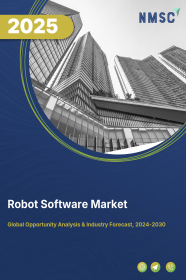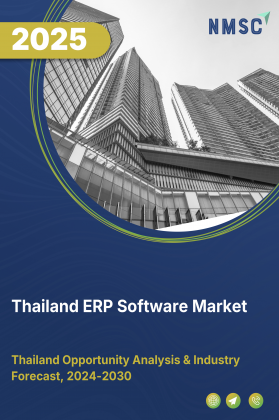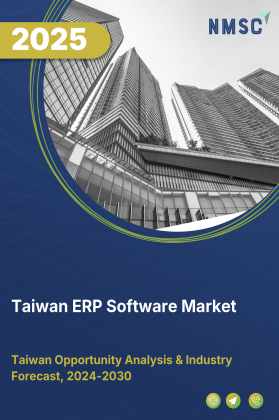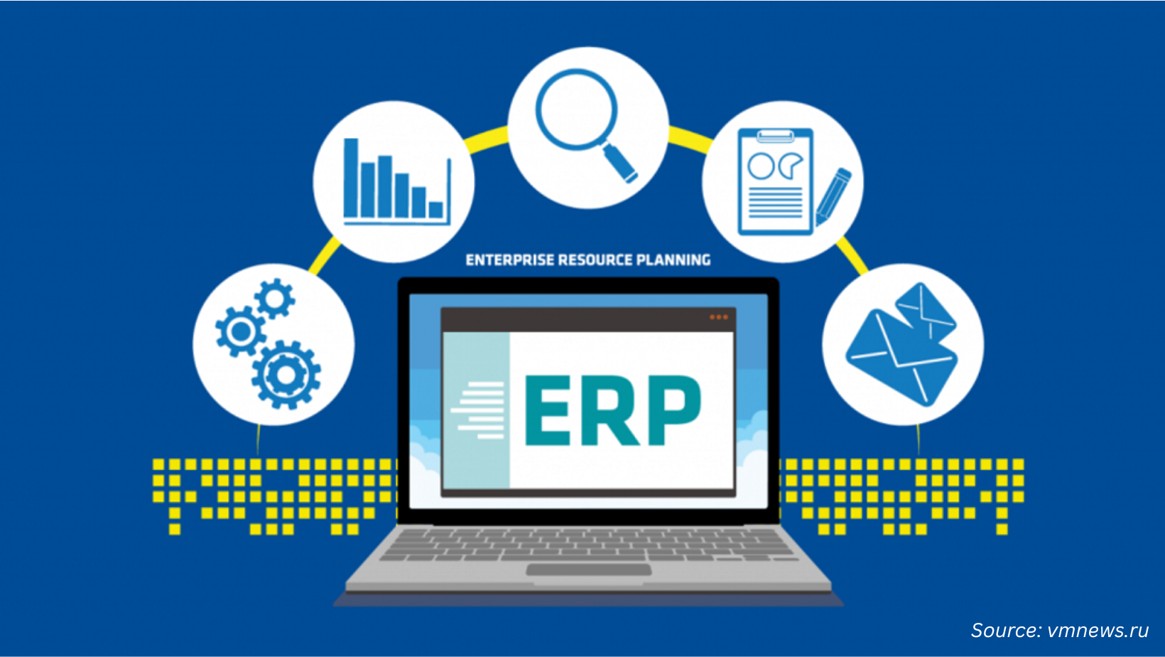
Robot Software Market by Software Type (Simulation Software, Navigation and Mapping Software, and Others), by Robot Type (Industrial Robots, Service Robots, Autonomous Mobile Robots (AMR), and Others), by Deployment Mode (On-Premise, Cloud-Based, and others), by Enterprise Size (Large Enterprises, and Small and Medium-sized Enterprises), by End-Use Industry (Manufacturing, Automotive, Healthcare & Life Sciences, and Others) – Global Opportunity Analysis and Industry Forecast, 2023–2030.
Industry: ICT & Media | Publish Date: 20-Oct-2025 | No of Pages: 707 | No. of Tables: 491 | No. of Figures: 396 | Format: PDF | Report Code : IC601
Market Overview:
The global Robot Software Market size was valued at USD 7.77 billion in 2022, and is expected to reach USD 45.54 billion by 2030, with a CAGR of 23.9% from 2023 to 2030. Robot software refers to the set of programs and algorithms that control and manage the operation of robots or robotic systems. These systems are utilized in a number of industries, such as logistics, manufacturing, entertainment, healthcare, and others.
The functioning of robot software involves several key aspects. For instance, it is responsible for controlling and coordinating the movements and actions of robots. These software programs ensure that the robots perform tasks accurately and efficiently by sending precise commands to the robotic components, such as motors and actuators.
Additionally, robot software plays a vital role in processing data from various sensors equipped in the robots. These sensors, such as cameras, Light Detection and Ranging (LIDAR) sensors, and tactile sensors, provide crucial environmental feedback that enables the robots to perceive and understand their surroundings.
A significant aspect of robot software is its capability to make informed decisions using artificial intelligence (AI) and machine learning (ML) algorithms. Robots can adapt to dynamic and changing conditions by analyzing the data from sensors, applying predefined rules, or learning from past experiences. This intelligence enables them to operate autonomously, making real-time decisions and adjusting their actions accordingly.
Moreover, robot software facilitates communication and networking between robots, enabling collaboration for complex tasks or data sharing with a central control system. In industrial settings, this interconnectedness allows for coordinated operations, leading to improved efficiency and productivity.
Rising Labor Costs and Workforce Constraints
Rising labor costs in regions such as North America and Europe are placing significant financial pressure on industries to maintain profitability while ensuring operational continuity. According to the International Labour Organization (ILO), global wage growth remains uneven, particularly in post-pandemic economies grappling with inflation and labor market imbalances. These cost pressures are prompting businesses to explore automation solutions that can offer sustainable alternatives to traditional labor-intensive processes.
At the same time, labor shortages and skill gaps in specialized roles—especially in manufacturing, logistics, and healthcare—are becoming increasingly common. In this environment, robot software emerges as a strategic enabler, allowing organizations to deploy machines that can execute precise, repetitive, and time-sensitive tasks without human limitations. These systems not only enhance productivity and consistency but also reduce long-term overhead costs, helping businesses remain competitive in increasingly dynamic global markets.
Industry 4.0 Acceleration and IoT Connectivity
The accelerating adoption of Industry 4.0 technologies is transforming manufacturing and industrial operations worldwide. With a focus on digitization, automation, and real-time data exchange, governments and enterprises are investing in smart infrastructure and connected systems. This transformation is driving significant demand for advanced robot software, which acts as the digital backbone enabling intelligent coordination, seamless data flow, and responsive decision-making within increasingly automated environments.
The integration of Internet of Things (IoT) devices into industrial ecosystems further amplifies the value of robot software. By connecting robots to sensors, machinery, and cloud platforms, software solutions facilitate predictive maintenance, adaptive process control, and real-time monitoring. These capabilities help minimize unplanned downtime, optimize resource use, and create agile manufacturing systems capable of adjusting to dynamic production needs—hallmarks of the industry 4.0 paradigm.
Cybersecurity & Regulatory Oversight as a Growth Constraint
With robot software increasingly embedded in IoT ecosystems, automated production lines, and public services, vulnerabilities to cyberattacks have emerged as a major concern. The EU NIS2 Directive, expands cybersecurity obligations to include industrial automation, robotics, and manufacturing sectors—requiring continuous risk assessments, incident reporting, and supply chain security measures. These enhanced legal requirements—and the prospect of substantial fines—are leading companies to postpone or scale back robot deployments until they can ensure robust defenses.
Additionally, operators in sensitive verticals like healthcare, transport, and defense must comply with stringent data protection laws—such as GDPR and sector-specific cybersecurity standards—before integrating robot software into critical workflows. The dual need to secure operational continuity and safeguard personal or proprietary information has elevated compliance costs, infrastructure complexity, and time-to-market for robotics solutions. As a result, market adoption is being moderated by increased cybersecurity due diligence and investment demands.
Expansion of Robotics-as-a-Service (RaaS) Creates New Market Opportunities
The growing adoption of Robotics-as-a-Service (RaaS) is opening up substantial opportunities within the global robot software market. This model enables businesses to access robotic hardware and software on a pay-as-you-go basis, eliminating the need for significant upfront investment. It allows companies—especially Small and Medium-sized Enterprises (SMEs)—to benefit from advanced automation technologies without being constrained by capital budgets. The flexibility and lower financial barrier of RaaS are encouraging broader deployment of robot software across sectors like manufacturing, logistics, and healthcare.
RaaS also creates recurring revenue streams for vendors and promotes continuous software innovation through cloud-based updates, remote monitoring, and modular service delivery. As industries demand more scalable, adaptable solutions in uncertain economic conditions, RaaS offers the agility needed to adjust robotic operations based on real-time demand. This is particularly valuable for companies operating in fluctuating markets, where the ability to scale robotics up or down efficiently is a strategic advantage. As a result, RaaS is emerging as a key enabler of digital transformation and automation on a global scale.
North America Holds the Dominant Market Share in the Global Robot Software Market
North America has emerged as a prominent player in the global robot software market, encompassing countries such as the U.S., Canada, and Mexico. The region has a strong presence of diverse industries, ranging from pharmaceuticals and food & beverages to automotive. Such presence and the implementation of robot software in these industries led to the growth of the robot software market. These industries have increasingly adopted robotics technology to enhance efficiency and productivity in their operations, further propelling the demand for advanced robot software solutions.
Moreover, North American countries have been witnessing substantial investments in research and development activities to develop cutting-edge robotic technologies. These initiatives have fostered the growth of the robot software market by providing a fertile ground for innovation and technology advancements. This region's rapid adoption of new technologies and the presence of leading robotics companies have fueled a significant market growth.
Major players in the robot software industry, such as IBM, Teradyne, Inc., and Nvidia, have established their headquarters in the U.S. They undertook strategic initiatives such as product launches and acquisitions to widen their market presence across the globe. For instance, in May 2023, Nvidia made significant advancements in the robot software market by introducing updates to its Metropolis platform and enhancing the Isaac AMR robotic software. These updates are specifically designed to meet the changing needs of industrial automation, leading to better productivity, efficiency, and safety in industrial operations than before.
Additionally, North America's influence extends beyond industrial domains, as the region has witnessed a steady rise in the adoption of robot software solutions for military applications. Countries such as the U.S. and Canada have increased their military expenditure, resulting in a higher demand for robots equipped with advanced robot software capabilities. These robots are deployed for tasks such as surveillance, reconnaissance, and explosive ordnance disposal. These tasks significantly enhance military forces' capabilities while minimizing risks to human operators. All of these factors are driving the growth of the robot software market in this region.
Robot software has been used in diverse sectors, such as mining, agriculture, and military, in this region. Thus, this expansion of applications has significantly driven the growth and development of the robot software in North America.
Asia-Pacific is Expected to Show Steady Growth in the Global Robot Software Market
The robot software market in Asia-Pacific is driven by several key factors, with one of the primary drivers being the growing demand for automation in manufacturing. Asia-Pacific boasts the world's largest and most competitive manufacturing industries. These industries increasingly turn to automation solutions to improve efficiency and productivity. Hence, robot software plays a vital role in successfully implementing such automation solutions.
Another significant factor propelling the Asia-Pacific robot software market is the surging adoption of the Industry 4.0. It represents the fourth industrial revolution that utilizes advanced technologies, such as artificial intelligence, robotics, and big data. Asia-Pacific stands as a leader in embracing the Industry 4.0, which, in turn, boosts the demand for sophisticated robot software to support and enhance these technological advancements.
Moreover, governments in the Asia-Pacific region actively support the development and adoption of robotics, offering financial incentives and regulatory backing. This supportive environment created by governments overlays the way for the steady growth of the robot software market in the region.
Furthermore, the region's emphasis on research and development and increased collaborations between industry players and academic institutions contribute significantly to the rising adoption of robot software solutions in Asia-Pacific. As investments in AI research continue to grow, the region is poised to witness further integration of advanced robot software technologies across various industries. Combining these factors, the robot software market in Asia-Pacific is experiencing a surge in demand and expected to continue to thrive in the foreseeable future.
Competitive Landscape
Several market players operating in the robot software industry include ABB Ltd., ArtiMinds Robotics GmbH, Brain Corp, Clearpath Robotics, CloudMinds, Dassault Systèmes, Flexiv, H2O.ai, IBM Corporation, Kemppi Oy Ab, Kinova Robotics, MathWorks, NVIDIA Corporation, Omron Corporation, Open Robotics, RoboDK Global, Rockwell Automation, Schneider Electric, Siemens AG, Standard Bots, Teradyne, Inc., Visual Components, Yaskawa Electric, Unity Technologies, FANUC Corp.. These market players are adopting strategies, including product launches across various regions, to maintain their dominance in the robot software market.
For instance, in April 2025, ABB Ltd.Announced spin-off of its Robotics Division into an independent company ("ABB Robotics") by 2026 to boost specialization and growth.
Moreover, in March 2025, NVIDIA Corporation, Released Isaac GR00T N1, a general-purpose robotic foundation model for reasoning and manipulation, It Launched Jetson Thor platform—delivering 7.5× AI performance for robotics and priced competitively, Introduced new Omniverse SDKs, Isaac Sim 5.0, and COSMOS for physical AI simulation.
Robot Software Market Key Segments
By Software Type
-
Simulation Software
-
Navigation and Mapping Software
-
Data Management and Analysis Software
-
Vision and Recognition Software
-
Communication Management Software
-
Predictive Maintenance Software
-
Fleet Management Software
-
AI and Machine Learning Software
-
Cybersecurity and Safety Software
-
Middleware and SDKs Software
-
Others
By Robot Type
-
Industrial Robots
-
Service Robots
-
Autonomous Mobile Robots (AMR)
-
Automated Guided Vehicles (AGV)
-
Surveillance & Security Robots
-
Customer Service & Hospitality Robots
-
Drones & Unmanned Aerial Vehicles (UAVs)
By Deployment Mode
-
On-Premise
-
Cloud-Based
-
Hybrid Deployment
By Enterprise Size
-
Large Enterprises
-
Small and Medium-sized Enterprises (SMEs)
By End-Use Industry
-
Manufacturing
-
Automotive
-
Healthcare & Life Sciences
-
Retail & e-Commerce
-
Banking, Financial Services, and Insurance (BFSI)
-
Transportation and Logistics
-
Government and Defense
-
Aerospace
-
Hospitality and Entertainment
-
Energy & Utilities
-
IT & Telecommunications
-
Others
By Region
-
North America
-
The U.S.
-
Canada
-
Mexico
-
-
Europe
-
The U.K.
-
Germany
-
France
-
Spain
-
Italy
-
Netherlands
-
Denmark
-
Finland
-
Norway
-
Sweden
-
Russia
-
Rest of Europe
-
-
Asia-Pacific
-
China
-
Japan
-
India
-
Australia
-
South Korea
-
Thailand
-
Singapore
-
Rest of Asia-Pacific
-
-
Rest of the World (RoW)
-
Latin America
-
Middle East
-
Africa
-
Key Players
-
ABB Ltd.
-
ArtiMinds Robotics GmbH
-
Brain Corp
-
Clearpath Robotics
-
CloudMinds
-
Dassault Systèmes
-
Flexiv
-
H2O.ai
-
IBM Corporation
-
Kemppi Oy Ab
-
Kinova Robotics
-
MathWorks
-
NVIDIA Corporation
-
Omron Corporation
-
Open Robotics
-
RoboDK Global
-
Rockwell Automation
-
Schneider Electric
-
Siemens AG
-
Standard Bots
-
Teradyne, Inc.
-
Visual Components
-
Yaskawa Electric
-
Unity Technologies
-
FANUC Corp.
Report Scope and Segmentation
|
Parameters |
Details |
|
Market Size in 2022 |
USD 7.77 Billion |
|
Revenue Forecast in 2030 |
USD 45.54 Billion |
|
Growth Rate |
CAGR of 23.9% from 2023 to 2030 |
|
Analysis Period |
2023–2030 |
|
Base Year Considered |
2022 |
|
Forecast Period |
2023–2030 |
|
Market Size Estimation |
Billion (USD) |
|
Growth Factors |
|
|
Countries Covered |
28 |
|
Companies Profiled |
25 |
|
Market Share |
Available for 10 companies |
|
Customization Scope |
Free customization (equivalent up to 80 working hours of analysts) after purchase. Addition or alteration to country, regional, and segment scope. |
|
Pricing and Purchase Options |
Avail customized purchase options to meet your exact research needs. |

















 Speak to Our Analyst
Speak to Our Analyst

























